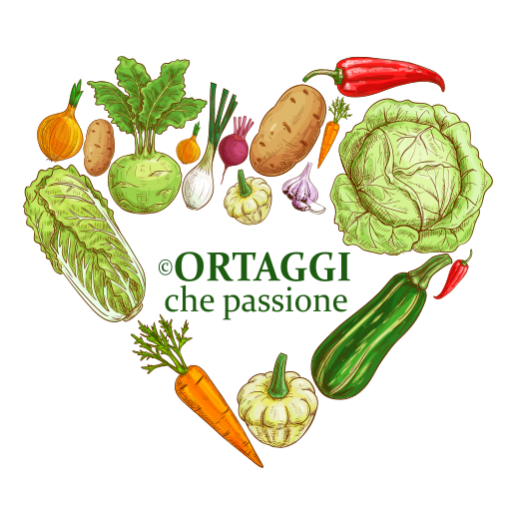How to bake a whole pumpkin with the skin on? What is the cooking time?
To bake a whole pumpkin with the skin on, simply leave it as it is, without cutting. The cooking time varies based on size. This method softens the flesh and makes it easy to peel once cooked. It’s a great option for preparing it without the hassle of cutting it raw, which can sometimes be tricky and dangerous.
PUMPKIN SEASON – from August to April (pumpkins can be stored in a cool, dry place for months post-harvest).
RECIPES with oven-baked pumpkin
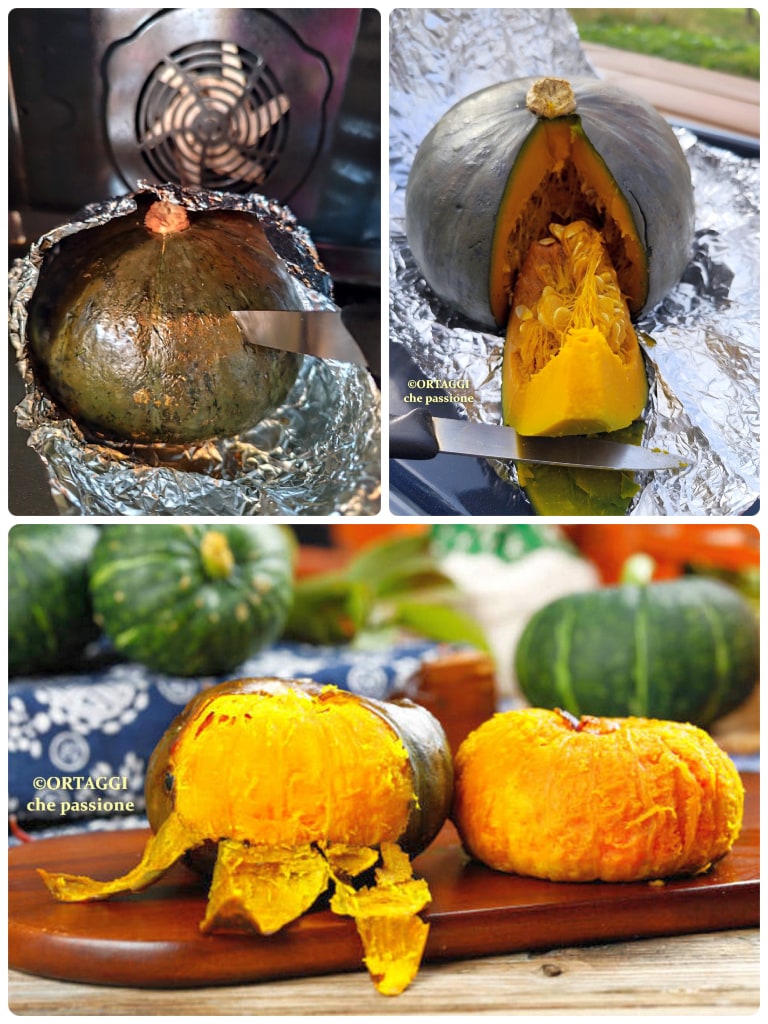
- Difficulty: Very Easy
- Cost: Cheap
- Preparation time: 5 Minutes
- Portions: 1Piece
- Cooking methods: Oven
- Cuisine: Healthy
- Seasonality: Autumn, Winter, and Spring
- Energy 26.13 (Kcal)
- Carbohydrates 6.53 (g) of which sugars 2.77 (g)
- Proteins 1.01 (g)
- Fat 0.10 (g) of which saturated 0.05 (g)of which unsaturated 0.02 (g)
- Fibers 0.50 (g)
- Sodium 1.01 (mg)
Indicative values for a portion of 100 g processed in an automated way starting from the nutritional information available on the CREA* and FoodData Central** databases. It is not food and / or nutritional advice.
* CREATES Food and Nutrition Research Center: https://www.crea.gov.it/alimenti-e-nutrizione https://www.alimentinutrizione.it ** U.S. Department of Agriculture, Agricultural Research Service. FoodData Central, 2019. https://fdc.nal.usda.gov
Whole Roasted Pumpkin
- 1 Delica pumpkin (or Hokkaido – about 2.2 lbs)
Read the nutritionist’s opinion at the bottom.
🍀🍀🍀🍀
How many calories does 100 g of oven-cooked pumpkin have?
Tools
- Aluminum recycled
- Knife smooth blade
How to Cook Pumpkin in the Oven
Prefer small or medium pumpkins, like Delica or Hokkaido, which cook faster and soften better than very large ones.
Choose a compact pumpkin, free of dents and with an even skin.
Wash the pumpkin well, since it will be cooked whole, it’s important to clean its skin thoroughly.
Pierce the skin, make a few holes in the skin with a knife blade. This will allow steam to escape during cooking, preventing the pumpkin from bursting.
Wrap the pumpkin in aluminum foil (or parchment paper) to retain moisture and make the flesh creamier and softer.
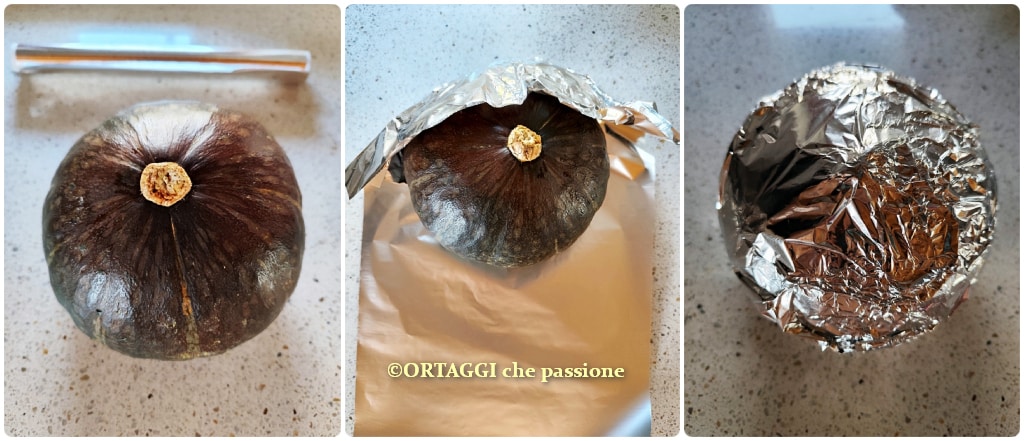
The cooking time mainly depends on the size of the pumpkin. A small pumpkin, between 2.2 and 4.4 lbs, usually requires between 30 and 60 minutes in a static oven at 392°F (or 356°F in a fan oven). If the pumpkin is larger, the time can extend up to 90 minutes to ensure even cooking.
For better results, turn halfway through cooking.
Check the Cooking
After about 40 minutes of cooking, check the texture by inserting a knife into the flesh through the skin; if it easily reaches the center, the pumpkin is ready. If it is still hard, extend the cooking time and check every 10 minutes.
Cleaning
Let the pumpkin rest for about ten minutes out of the oven before cutting it, to allow the flesh to settle. Then slice, remove the seeds, and scoop out the flesh with a spoon or knife.
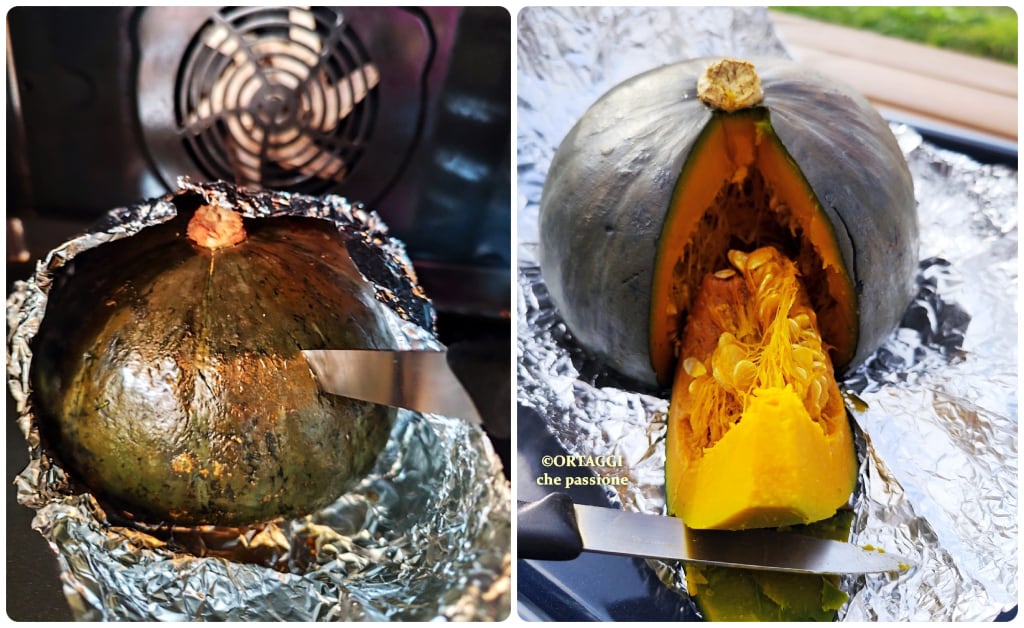
🍀🍀🍀🍀
Pumpkin Choice
Choose small or medium-sized pumpkins, preferably the violin variety (like Butternut or Violina rugosa). Ensure the pumpkin is compact, with a uniform skin, free of dents or signs of deterioration.HOW TO PROCEED
Wash and cut the pumpkin in half (Butternut or Violina rugosa) or into 3-4 pieces, depending on size. Carefully remove all the seeds. Place a sheet of aluminum foil (or parchment paper) on the baking sheet and place the pumpkin with the flesh facing up on top. For more even cooking, make cuts in the flesh.
Roast in a preheated static oven at 392°F (or fan oven at 356°F) until tender, at least 20 minutes. Once cooked, the skin practically removes itself.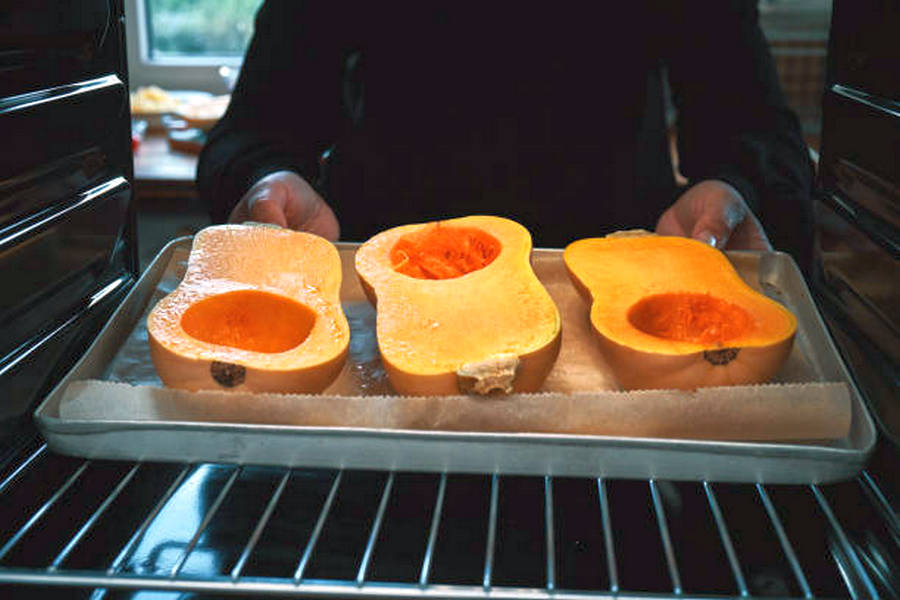
Externally wash the pumpkin, then place it on parchment or aluminum foil, whole or in large slices (in the latter case, it’s better to remove the seeds beforehand).
Then bake in a preheated static oven at 392°F for at least 5 minutes. Let cool in the oven, then peel and continue cooking according to your preferences.
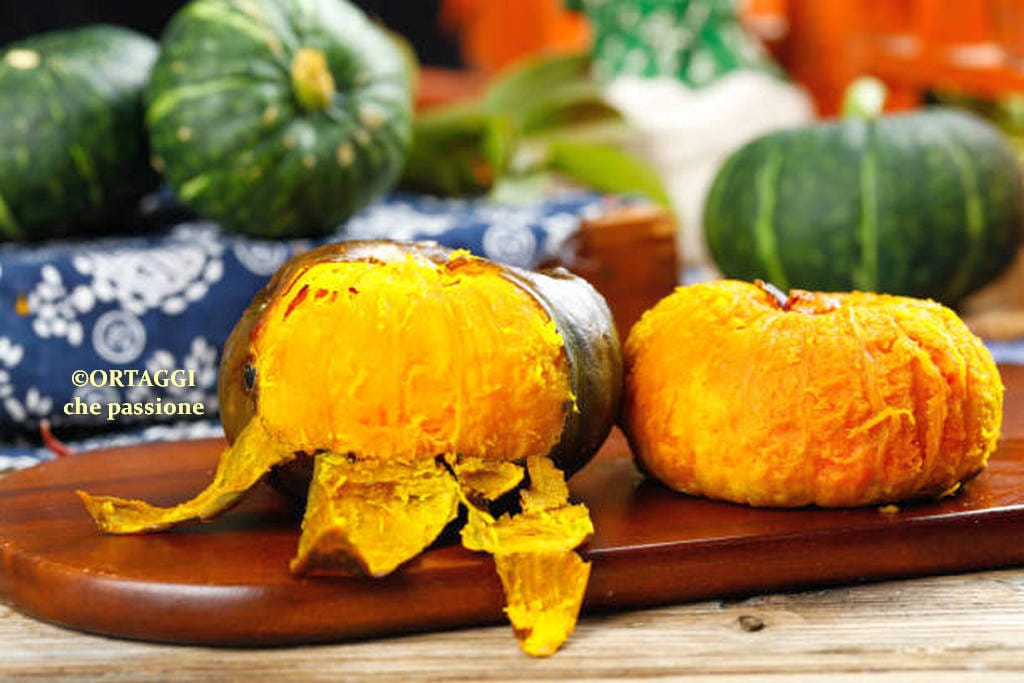
HOW TO USE
Oven-baked pumpkin flesh is perfect for creams and velvety soups, hummus, and purées, gnocchi or pasta fillings. Additionally, it can also be used in pumpkin spice, desserts like muffins, cakes, and leavened products like focaccia or pumpkin bread.
CONSUMING THE OVEN-COOKED PUMPKIN SKIN
Consuming pumpkin skin offers numerous benefits. Firstly, it is an important source of fiber, which helps improve digestion and increases satiety. Furthermore, the skin contains antioxidants like carotenoids and vitamin C, which protect cells from free radicals and support the immune system.
Choosing to use the skin also helps reduce food waste, promoting a more sustainable lifestyle. It can be eaten as is or added to soups and velvety soups, enriching dishes with flavor and nutrition.
STORING Oven-Cooked Pumpkin Flesh
Let it cool completely, then transfer to airtight containers. Refrigerate for 3-4 days or freeze in freezer bags to store for up to 6 months (then defrost at room temperature or in the microwave).
BENEFITS of the Recipe
Nutritionist Manuela Testa says: “Pumpkin is an autumn vegetable with many beneficial properties: with only 18 kcal per 100g, it is rich in water, fiber, carotenoids, and minerals. This food is a concentrate of nutrients useful for well-being, as it strengthens the immune system and supports heart health. The antioxidants present reduce the risk of chronic diseases, such as cancer and cardiovascular diseases. Pumpkin is suitable both in low-calorie diets and for diabetics; despite its high glycemic index, it has a low glycemic load and contains abundant fiber and water. Cooked flesh is suitable for many recipes: it can be used for creams, soups, sweet or savory cakes, for focaccias or bread, hummus, purées, gnocchi, or as a seasoning for risottos and pasta.”

